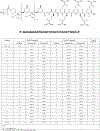A targeted antisense therapeutic approach for Hutchinson-Gilford progeria syndrome
- PMID:33707773
- PMCID: PMC10158310
- DOI: 10.1038/s41591-021-01274-0
A targeted antisense therapeutic approach for Hutchinson-Gilford progeria syndrome
Abstract
Hutchinson-Gilford progeria syndrome (HGPS) is a rare accelerated aging disorder characterized by premature death from myocardial infarction or stroke. It is caused by de novo single-nucleotide mutations in the LMNA gene that activate a cryptic splice donor site, resulting in the production of a toxic form of lamin A, which is termed progerin. Here we present a potential genetic therapeutic strategy that utilizes antisense peptide-conjugated phosphorodiamidate morpholino oligomers (PPMOs) to block pathogenic splicing of mutant transcripts. Of several candidates, PPMO SRP-2001 provided the most significant decrease in progerin transcripts in patient fibroblasts. Intravenous delivery of SRP-2001 to a transgenic mouse model of HGPS produced significant reduction of progerin transcripts in the aorta, a particularly critical target tissue in HGPS. Long-term continuous treatment with SRP-2001 yielded a 61.6% increase in lifespan and rescue of vascular smooth muscle cell loss in large arteries. These results provide a rationale for proceeding to human trials.
Conflict of interest statement
Competing interests
The authors declare no competing interests.
Figures
















Comment in
- Splice-inhibition therapy targets progeria.Revêchon G, Whisenant D, Eriksson M.Revêchon G, et al.Nat Med. 2021 Mar;27(3):377-379. doi: 10.1038/s41591-021-01267-z.Nat Med. 2021.PMID:33707774No abstract available.
- Antisense approach slows progeria.Villanueva MT.Villanueva MT.Nat Rev Drug Discov. 2021 May;20(5):343. doi: 10.1038/d41573-021-00056-0.Nat Rev Drug Discov. 2021.PMID:33772219No abstract available.
References
- Burke B & Stewart CL The nuclear lamins: flexibility in function. Nat. Rev. Mol. Cell Biol. 14, 13–24 (2013). - PubMed
- Capell BC & Collins FS Human laminopathies: nuclei gone genetically awry. Nat. Rev. Genet. 7, 940–952 (2006). - PubMed
- Hennekam RCM Hutchinson–Gilford progeria syndrome: review of the phenotype. Am. J. Med. Genet. A 140, 2603–2624 (2006). - PubMed
Publication types
MeSH terms
Substances
Grants and funding
LinkOut - more resources
Full Text Sources
Other Literature Sources
Molecular Biology Databases
Miscellaneous
